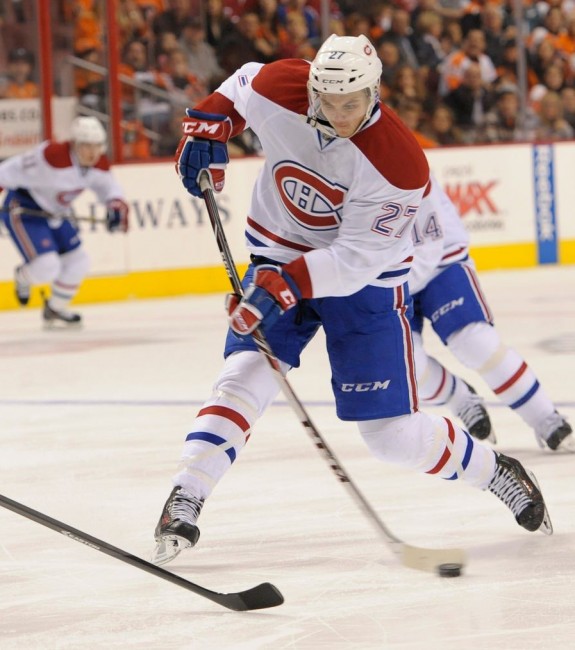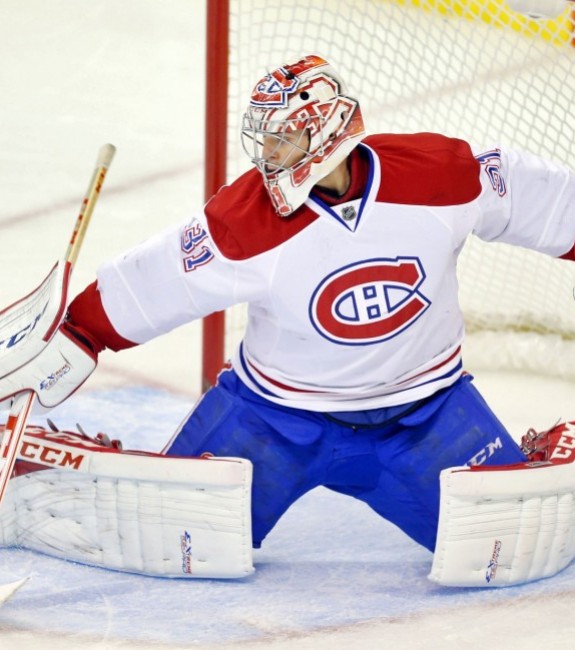The Eastern Conference first round series between the Montreal Canadiens and the New York Rangers is easily the most divided and uncertain in terms of predictions. The teams are so similar that if you swapped jerseys for a game it would be hard to immediately tell.
On the surface, the one edge Montreal may have is a physical advantage. The Habs triumphantly bulked up in the days leading up to the trade deadline, completely rewriting their fourth line. Yet in Game 1 it was both teams that came out hitting. They collided a combined 98 times to be exact. In a season where they averaged 20.9 hits per game, The Rangers threw more than double that (45) in Game 1 and walked away with a 2-0 win (including an empty net goal).
Checking All the Boxes
The Game 1 box score tells the story. It tells of the Canadiens flying out of the gate, outshooting the Rangers 16-5 in the first period, and spending a significant amount of time in the offensive zone. Then it shows the Rangers starting to lay the body heavily, taking momentum in the final two frames and taking over the game.

The pace overall was quite high, suggesting the speed of the Rangers wasn’t necessarily stifled by being overpowered. J.T. Miller was the best player with the puck for the entire 60 minutes, streaking through the neutral zone and repeatedly carrying the puck with full control across the Canadiens’ blue line.
This story as told is true. The Rangers played consistently from puck drop to buzzer. They earned the win. There may, however, be a few important pages left out.
While the Rangers were credited with an impressive and unusually high 45 hits, the Canadiens chalked up an even higher 53 hits. This number is just as new to them as it is to the Rangers. Montreal only averaged 22.7 hits per game themselves. All they did was match New York’s intensity. For every big hit the Rangers offered up in the neutral zone, the Canadiens answered with a big one of their own.
The argument could be made that while the season hitting average may not have been high on the part of the Canadiens, the data could be skewed because they didn’t add the fourth line pieces of that element until late in the year. That line was supposed to change the tone for the playoffs.
Bottom Feeders
In Game 1, the fourth line did feature the likes of Steve Ott as expected. It also contained a brilliant surprise in Alex Galchenyuk. While New York’s increased checking took away time and space from Max Pacioretty and Alexander Radulov, Galchenyuk had no such issue. The new look Montreal trio gave the Rangers defence fits, combining for 8 shots on goal and a good chunk of offensive zone time. New York had no answer because they couldn’t waste top defence minutes on that match up. The Montreal fourth line performed exactly as advertised.

Having said the Rangers came out hitting and did earn the win, it wasn’t for lack of effort or opportunity on the part of the Canadiens. They were equally as deserving of victory. Having said J.T. Miller was the best player for 60 minutes with the puck, Brendan Gallagher was probably the best player for 60 minutes without it, if you don’t count Rangers goaltender Henrik Lundqvist.
Eye for an Eye
Despite reactionary suggestions after Game 1 that they should just focus on hockey and not get sucked into the hitting, I think the Canadiens are absolutely right in carrying on with the physical play. Game 2 is exactly the reason why. The hits were slightly more lopsided in New York’s favor this time around, at 73 hits to 55 for Montreal. That’s because the Canadiens were able to work their way into the dangerous areas in front of the net. They were able to fight through the neutral zone and enter on the attack with puck control, much like the Rangers did in Game 1. All that engaging and battling paid off. It doesn’t take away from the speed and skill game they have. It enables it.
Eve though they carried the play in Game 2 and had the puck a lot more, the Canadiens still threw two more hits than they did in Game 1 when they were doing more of the chasing. That’s because they aren’t going out of their way to look for it. They’re only hitting in response to hold their ground. That’s why the numbers are so similar eve in different game scenarios. The Rangers on the other hand threw almost 30 more hits in Game 2 when doing the chasing. That’s the sign of a slightly more desperate team hoping to hang on.
Man Disadvantage
The resulting 4-3 Montreal overtime win to tie the series was much deserved, and the one main reason this series isn’t 2-0 for Montreal has nothing to do with New York. It’s the ineffectiveness of the Montreal power play. The Canadiens were 0-for-3 with the man advantage in Game 1, and 0-for-4 in Game 2. What helped them get a late goal to force overtime was actually a couple of non-calls by the officials. Again in overtime, they had so much pressure there could have been at least four power plays given to Montreal in the first 10 minutes, but mercifully the referees had put the whistles away and the Habs could keep the 5-on-5 momentum going.
A lackluster power play is a bad sign, sure. Earning the opportunities is a positive. If you’re the team going out of your way to hit and playing overly aggressive, you’re not the ones being given the power plays or drawing so many non-calls. It just goes to show the Canadiens aren’t overdoing it, but doing it just right.

Carey Price was huge when he needed to be as well. That helps. It’s not like he wasn’t busy facing 38 shots, but when you give up that many shots against and still out shoot your opponent by 20, what you’re doing is probably working just fine.
Games 3 and 4 shouldn’t be any different from these first two, and if they played games 99 and 100 they wouldn’t be either. Keep the hitting coming.